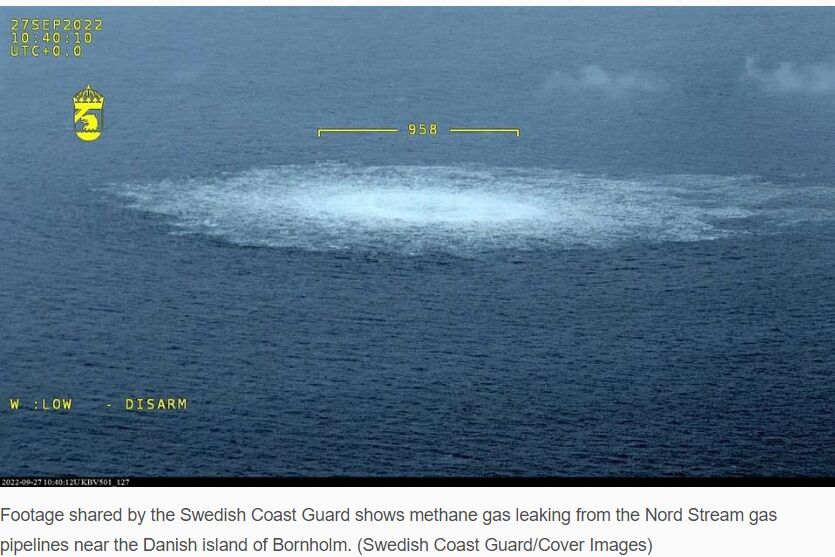
A review of the possible causes of a subsea pipeline explosion.
Cathodic Protection Network Scientists
and Corrosion Control Engineers
Abstract
The result of a subsea pipeline explosion is shown in this photograph.

The failure of the Nord Stream Pipelines, that are currently of international
interest are studied using data obtained from physical modeling, computer
analysis and understanding that has taken decades to accumulate.
The most likely cause of these failures is accelerated corrosion that can
consume steel at a rate of 17 lbs per amp per year and could easily have
caused penetration of the steel wall in months.
It is unlikely that external explosions could be the cause because the pressure
inside the pipeline was proved to be greater than the pressure outside by the gas escaping after the failure of the metal.
(607 characters)




